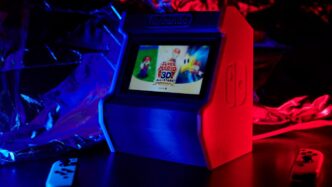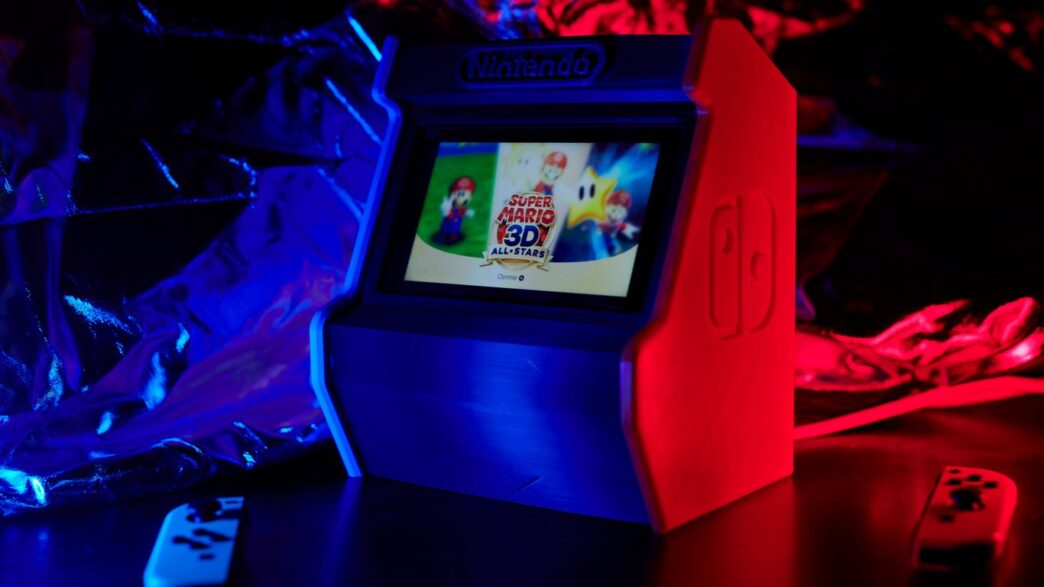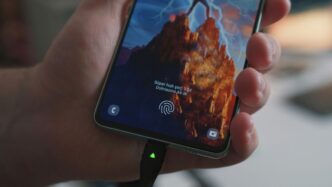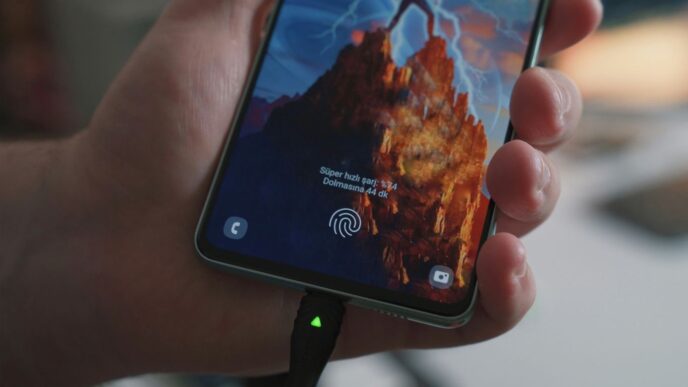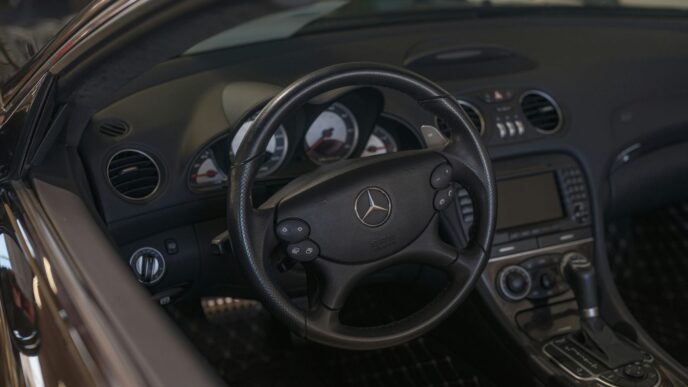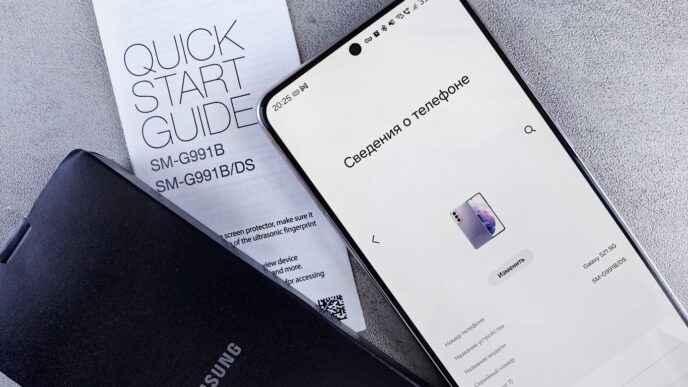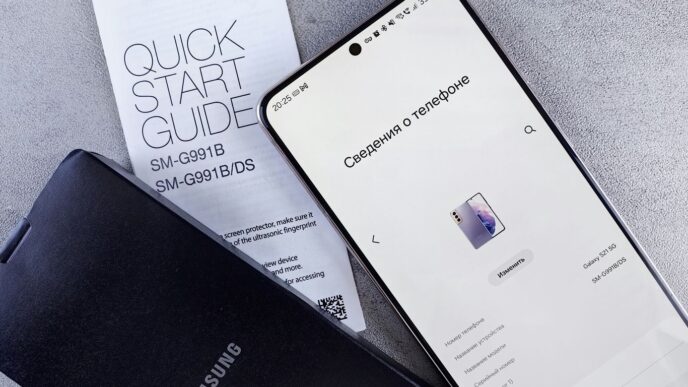So, you’ve been seeing all the buzz around these portable gaming devices, right? It feels like everyone’s talking about playing big games on the go. If you’ve been on the fence about jumping into the handheld gaming scene, 2025 might just be the year to finally do it. The tech has really come a long way, and there are some seriously cool upcoming handheld consoles 2025 that you should definitely check out. Let’s break down what’s hot and what’s not.
Key Takeaways
- The handheld gaming market is booming, with new devices offering impressive performance and features that rival traditional consoles and PCs.
- Nintendo’s next console, often referred to as the Switch 2, is a major player expected to continue Nintendo’s dominance in the portable space with exclusive titles.
- PC gaming handhelds like the Steam Deck OLED and Asus ROG Ally X provide access to vast PC game libraries, offering flexibility for gamers who prefer PC titles.
- Beyond the major players, options like the Super Pocket cater to retro enthusiasts, while the PlayStation Portal offers a dedicated remote play experience for PS5 owners.
- When choosing a handheld, consider factors like battery life, screen quality, user interface, and overall value to find the device that best suits your gaming habits.
The Evolving Landscape of Upcoming Handheld Consoles 2025

It feels like just yesterday we were all marveling at the idea of playing console-quality games on the go. Now, in 2025, that idea isn’t just a reality; it’s practically the norm. The handheld gaming scene has absolutely exploded, moving way beyond those early, clunky devices. What started as a niche interest has turned into a full-blown tech race, with major players all trying to cram serious gaming power into something you can actually fit in your backpack. It’s a pretty exciting time to be a gamer who likes to move around.
The Golden Age of Gaming Handheld Technology
We’re really in a sweet spot right now. The kinks that plagued the first wave of these powerful handhelds seem to be worked out. You know, the stuff like battery life that died after an hour or software that felt like it was still in beta. Now, these devices are more stable, more powerful, and honestly, more reasonably priced than you might expect. It’s not like you’re beta testing anymore; you’re buying into a pretty solid platform with tons of games and a community that’s ready to help if you get stuck. Plus, the flexibility is just amazing. Playing a big, demanding game on your commute, then switching to a chill indie title in bed? That’s the kind of stuff that just wasn’t possible a few years ago. It’s changing how we fit gaming into our lives, making it less of a scheduled event and more of a constant companion.
Performance That Actually Matters
Let’s talk specs for a second, but without getting too bogged down in numbers. The big deal is that these handhelds can now run games that used to require a beefy desktop PC. We’re talking about titles that look good, run smoothly, and don’t make you feel like you’re sacrificing a ton of visual quality just to play on the go. It’s a huge step up from the days when portable gaming meant simpler graphics and shorter experiences. The processing power available in these devices means you can jump into complex worlds and enjoy them without constant frustration over lag or low frame rates. It’s about having a gaming experience that feels complete, no matter where you are.
The Software Ecosystem Revolution
It’s not just about the hardware, though. The software side of things has also gotten a massive upgrade. Think about how many different places you can get games now. You’ve got your big storefronts like Steam, but also access to emulators for older consoles, and even cloud gaming services that let you stream games that would normally be way too much for the device itself. This variety means your options for what to play are pretty much endless. Plus, the community support for these devices is incredible. People are constantly sharing tips, creating custom software, and making sure that older games run better than ever. It’s a living, breathing ecosystem that keeps getting better, and that’s something you don’t always see with gaming hardware.
Nintendo’s Next Leap: The Switch 2 Factor
Competition Breeds Excellence
The arrival of the Nintendo Switch 2 has really shaken things up in the handheld gaming world. Nintendo’s latest portable machine brings serious 4K gaming when docked and enough power to make even PC handhelds a bit nervous. This isn’t just a small update; it’s a big jump that shows Nintendo hasn’t been slacking off while others battled for the PC handheld market. Other companies making handhelds now have to compete not just with each other, but with Nintendo’s famous game-making skills and their established system. Having exclusive games like Mario, Zelda, and Pokemon creates a strong reason to stick with Nintendo that raw specs can’t match. It’s one thing to have better performance, but it’s another to compete with decades of popular game series and the polished quality Nintendo is known for in its own games. This competition has pushed other handheld makers to focus on features Nintendo can’t or won’t offer, like open platforms, playing older PC games, modding, and using different game stores. These options give gamers more freedom and flexibility.
The Exclusive Games Dilemma
When you look at Nintendo’s history, it’s hard to ignore their incredible lineup of games. The Switch 2 continues this tradition, offering access to titles you simply can’t play anywhere else. Games like Mario Kart World are a huge draw, and the Switch 2 promises a whole new generation of these unique Nintendo experiences. This is a big deal for many gamers. While other handhelds might boast more power or flexibility, they can’t offer that same magic that comes from Nintendo’s first-party studios. It’s a tough choice if you’re looking for the absolute best performance across all games, but if you’re a fan of Nintendo’s specific franchises, the Switch 2 is almost a must-have. The system also has some neat upgrades, like improved Joy-Con controllers that are more comfortable. Plus, new features like a mouse mode for the Joy-Cons could be really interesting for certain types of games, like strategy titles. It’s a solid upgrade that makes Nintendo games look and play better than ever, with smoother frame rates and quicker loading times in many titles. Some older games even get performance boosts, and you can get upgraded versions of certain games for better frame rates. However, the battery life is a bit of a letdown, often lasting only about two and a half hours in testing, which can be a problem on longer trips. The console itself is also larger than previous models, so if you need something super small, the Switch Lite might still be a better fit.
Nintendo Switch 2: The Best Overall Experience
For many, the Nintendo Switch 2 is shaping up to be the top pick for a handheld console. It really builds on what made the original Switch so popular, but with significant improvements across the board. The new 7.9-inch screen is bright and clear, making games look fantastic, even if it’s not an OLED panel. It also supports higher resolutions when docked, meaning your games can look great on a TV too. The upgraded Joy-Con controllers are more comfortable to hold, and new features add some interesting ways to play. Plus, the ability to play existing Switch games means you don’t lose access to your old library. It’s a powerful machine that can handle demanding games well, offering decent frame rates and smoother gameplay. While the battery life isn’t amazing, usually topping out around two to three hours in heavy use, it’s still a very compelling package. The price point is also on the higher side, making it a bigger investment. But if you’re drawn to Nintendo’s exclusive games and want a versatile console that works both handheld and on a TV, the Switch 2 is hard to beat. It’s a premium device that justifies its cost with its performance and unique game library. For those looking for a great co-op experience, a new survival game is set to launch on the Nintendo Switch 2 in November 2025.
PC Gaming Powerhouses: Steam Deck and Alternatives
When we talk about playing PC games on the go, a few names immediately jump to mind. Valve’s Steam Deck has really set a new standard, showing us what’s possible when you bring your entire Steam library into a portable format. But it’s not the only player in town, and the competition is heating up, giving us more choices than ever for our handheld PC gaming needs.
Steam Deck OLED: Best for PC Gamers
Let’s be honest, the Steam Deck OLED is pretty much the king of the hill right now if your main goal is to play your PC games anywhere. It’s not just about having a big screen; it’s about how good that screen looks. The OLED display is a massive upgrade, making games pop with vibrant colors and deep blacks that the older LCD version just couldn’t match. Playing something like the Resident Evil 2 remake on this thing is a treat for the eyes. Plus, Valve’s SteamOS is a joy to use. It feels like a proper console interface, making it easy to find and launch your games. They even have this handy ‘Deck Verified’ system that tells you upfront if a game is going to run well, which saves a lot of guesswork. If you’ve got a huge Steam library, this is the best way to take it with you. It’s also a much cheaper way to get into portable PC gaming than buying a dedicated gaming laptop, even the higher-end OLED models.
However, it’s not perfect. The device itself is quite large, so it’s not exactly pocket-friendly. And while it handles most games well, some newer, more demanding titles can really push it to its limits, sometimes resulting in choppy frame rates. Battery life can also be a bit of a gamble, especially with those graphically intense games; you might only get a couple of hours if you’re really pushing it. Also, getting non-Steam software or services like Xbox Game Pass to work can be a bit of a hassle, requiring some tinkering with the Linux-based operating system. Some popular online games also just don’t play nice with SteamOS.
Asus ROG Ally X: The Windows Contender
Asus jumped into the handheld PC arena with the ROG Ally, and it’s a strong contender, especially if you prefer the familiarity of Windows. It boasts a sharp 1080p display with a 120Hz refresh rate, which means games look incredibly crisp and smooth. Under the hood, it packs a powerful AMD Ryzen Z1 Extreme processor, capable of running many demanding games at respectable frame rates. The design is also quite comfortable for longer play sessions, which is a big plus. Being a Windows device means you can install pretty much any PC game launcher or software you want right out of the box, which is a huge advantage for those who use multiple storefronts or services like Xbox Game Pass. It’s a great option for anyone who wants a Windows experience in a handheld form factor.
But, the ROG Ally isn’t without its drawbacks. While the specs look great on paper, you often have to run games at lower resolutions to get the best performance, which can negate some of the benefits of that sharp display. The battery life, in my testing, was also quite disappointing, often lasting less than two hours with demanding games. And while Asus has its Armoury Crate app to organize games, it’s just not as polished or user-friendly as Valve’s SteamOS. It feels a bit clunky compared to the Deck’s streamlined approach.
Lenovo Legion Go: A Strong Competitor
Lenovo’s entry, the Legion Go, is another interesting option that brings some unique features to the table. It sports a large, high-resolution display that’s great for immersive gaming. What really sets it apart, though, are the detachable controllers, similar to the Nintendo Switch. This gives you a lot of flexibility in how you play, whether you prefer a traditional handheld setup or want to use the controllers separately. It also runs Windows, giving you access to all your PC games and software. For those who value versatility and a bigger screen, the Legion Go is definitely worth a look.
However, like the ROG Ally, it runs Windows, which means you’re dealing with the same potential compatibility quirks and the need to manage updates and drivers yourself. The detachable controllers, while innovative, can sometimes feel a bit less solid than integrated ones, and the overall size and weight might be a bit much for some users. Battery life is also a common concern with these powerful Windows handhelds, and the Legion Go is no exception, often requiring frequent charging during extended play sessions. It’s a powerful machine, but it demands a bit more from the user in terms of management and power considerations.
Beyond the Big Names: Niche and Budget Options
While the big players like Nintendo and Valve get a lot of attention, the handheld market in 2025 is also brimming with devices that cater to more specific tastes or tighter budgets. You don’t always need the absolute latest tech to have a great portable gaming experience. Sometimes, a focused device is exactly what you’re looking for.
Super Pocket: The Retro Gaming Champion
If your heart beats for the classics, the Super Pocket is a real gem. It’s not just about the built-in games, though those are pretty fun. What really makes it stand out is its ability to play Evercade cartridges. This means you get access to a massive library of retro titles from various classic consoles, all in one small package. It’s easily the most affordable way to get your hands on a dedicated retro gaming device that feels good to hold and use. The design is charming, and it’s small enough to slip into a pocket, making it perfect for quick gaming sessions on the go.
PlayStation Portal: Seamless Remote Play
For those who already own a PlayStation 5, the PlayStation Portal offers a unique proposition. It’s not a standalone console; instead, it’s designed specifically for remote play. You stream games directly from your PS5 over your home network or the internet. The hardware itself is built around the excellent DualSense controller, giving you that familiar, high-quality feel. If you’ve ever wanted to play your PS5 games in bed or another room without moving the console, this is the device for you. It’s a very specific use case, but it nails it perfectly, providing a smooth and responsive experience for streaming your PS5 library.
Nintendo Switch Lite: The Budget-Friendly Choice
While the main Switch 2 is the star of the show for many, the Nintendo Switch Lite remains a fantastic option for those who want Nintendo’s excellent game library without the higher price tag. It’s smaller, lighter, and designed purely for handheld play – you can’t dock it to a TV. This makes it incredibly portable and a great choice for younger gamers or anyone who prioritizes a lower cost. You still get access to all the amazing first-party Nintendo titles, which is a huge draw. It’s a straightforward, no-frills device that does one thing very well: play Nintendo games portably.
Key Considerations for Your Next Handheld Purchase
So, you’re thinking about grabbing one of these new handheld gaming machines, huh? It’s a big decision, and honestly, there are a few things you really need to think about before you hand over your cash. It’s not just about picking the prettiest screen or the one with the most buttons. You’ve got to consider how you’ll actually use it, day in and day out.
Battery Life: The Eternal Struggle
This is probably the biggest one for most people. Nobody wants their game to die halfway through a boss fight, right? The battery life on these things can vary wildly. Some can get you a few hours of serious gaming, while others might struggle to last through a long commute. It really depends on the game you’re playing and how hard you’re pushing the hardware. If you’re always near a power outlet, maybe it’s not a huge deal. But if you plan on gaming on the go, you’ll want to look closely at reviews that focus on real-world battery performance. Some users have even started looking into external battery packs to keep the juice flowing, but that adds extra bulk, which kind of defeats the purpose of a portable device. It’s a trade-off, for sure.
Screen Quality and User Interface
When you’re staring at a small screen for hours, it better be a good one. We’re seeing a lot of different display technologies out there, from vibrant OLEDs to high-resolution LCDs. Some screens are super bright and sharp, making games look amazing, while others might have issues with ghosting or smearing, especially in fast-paced games. Then there’s the user interface. Most of these handhelds run on Windows, which is great for game compatibility, but the way each manufacturer tweaks it to feel more like a console is important. You want something that’s easy to navigate, lets you tweak settings without a hassle, and generally just gets out of your way so you can play. A clunky interface can really ruin the experience, no matter how powerful the device is.
Making the Financial Case: Gaming Handheld Value
Let’s talk money. These devices aren’t exactly cheap, but when you look at what you’re getting, the value proposition can be pretty strong. Think about it: you’re not just buying a console; you’re getting a portable PC. This means access to a massive library of games, often at much lower prices than console equivalents, especially during sales. Plus, you can play older PC games you might already own. When you compare the upfront cost to the sheer number of games you can play and the flexibility you get, it starts to make a lot of sense. It’s about looking at the long-term cost of ownership and how much gaming time you’ll actually get out of it. Don’t feel pressured to upgrade your current device if it’s still working fine; sometimes waiting can lead to better deals or even more refined hardware don’t feel pressured by contract end dates.
The Future of Portable Play: What to Expect in 2025
Looking at the direction handheld gaming is heading, 2025 really feels like a turning point. These aren’t the clunky little toys we grew up with — now, portable consoles are smart, powerful, and built to fit all types of players, from folks who just want some quick Mario to people booting up the latest PC blockbusters on a train. Virtually every major tech company is in the mix, and the effects are starting to show.
Innovation Driven by Competition
Competition does funny things to an industry. Just like how carmakers bring out new features to stay ahead (tech keeps evolving), handheld gaming brands are pushing the limits this year. Here’s what’s happening:
- Faster hardware launches and software updates are the norm, not the exception.
- Features like OLED screens, haptic feedback, and adaptive controls are spreading fast.
- Companies are listening to feedback and patching issues quicker — goodbye, day-one disasters!
It’s a real race, and that means better devices for everyone, not just those at the top.
Long-Term Investment Perspective
A lot of folks are thinking twice before spending on a new console. These devices aren’t cheap! But the good news? The landscape has changed for the better:
| Year | Avg. Price of Top Handheld | Software Updates (yrs) | Typical Resale Value % | Game Library Access |
|---|---|---|---|---|
| 2020 | $400 | 2 | 30 | Limited |
| 2025 | $550 | 4+ | 50 | Massive |
- Devices now get years of updates, not just quick fixes.
- Resale values stay up, since handhelds remain relevant longer.
- Most consoles open up huge back catalogs, even from different brands.
Before, these would get outdated fast and end up in the drawer. Now? They seem like a real investment.
Your Personal Gaming Revolution Awaits
So what’s next for you? Here’s what to expect as you think about upgrading or jumping into handheld gaming:
- There’s truly a model for every playstyle, budget, and age group.
- Playing with friends — in-person or online — is emphasized like never before.
- No more choosing between quality, game choice, or play-anywhere convenience. You can have it all.
Portable gaming doesn’t just fit around your life; it’s changing what gaming can mean each day. If you’ve been wondering whether it’s the right time, well, this might just be your year.
The Future is Portable
So, after looking at all these cool gadgets, it’s pretty clear that 2025 is shaping up to be a huge year for handheld gaming. Whether you’re a PC gamer wanting to take your library on the go, a Nintendo fan eager for the next big thing, or just someone who likes playing games anywhere, there’s something out there for you. These devices have really come a long way, offering powerful performance and great screens in ways we haven’t seen before. It feels like we’re really in a new era for playing games wherever you are, and honestly, it’s pretty exciting to see what else comes next.
Frequently Asked Questions
What makes handheld gaming consoles so popular right now?
Handheld consoles are super popular because you can play awesome games anywhere, like on the bus or even in bed! They’re like mini computers that let you play big games without needing a TV. Plus, new ones are way more powerful than the old Game Boys, so they can run really cool games.
Is the Nintendo Switch 2 the best handheld console for everyone?
The Switch 2 is a really great choice, especially if you love Nintendo games. It’s easy to use and has a lot of fun games. But, if you play a lot of PC games, something like the Steam Deck or ROG Ally might be better because they can play more types of computer games.
Can I play my PC games on a handheld console?
Yes, you totally can! Devices like the Steam Deck and the Asus ROG Ally are basically small PCs. They let you play many of the games you already own on your computer, bringing your PC gaming library with you wherever you go.
Are handheld consoles good for kids?
Definitely! The Nintendo Switch Lite is a fantastic choice for kids. It’s smaller, tougher, and less expensive than other options. It’s also pretty simple to figure out, making it easy for younger players to jump right into the fun.
What should I think about when buying a handheld console?
When you’re picking one, think about how long the battery lasts, how good the screen looks, and how easy it is to use. Also, consider the games you want to play and how much you want to spend. Some are cheaper but play fewer games, while others are pricier but can do more.
Can I play games on the PlayStation Portal without a PS5?
Nope, you need a PlayStation 5 to use the PlayStation Portal. It’s designed to stream games from your PS5 to the handheld device. So, if you don’t have a PS5, this isn’t the right handheld for you.

